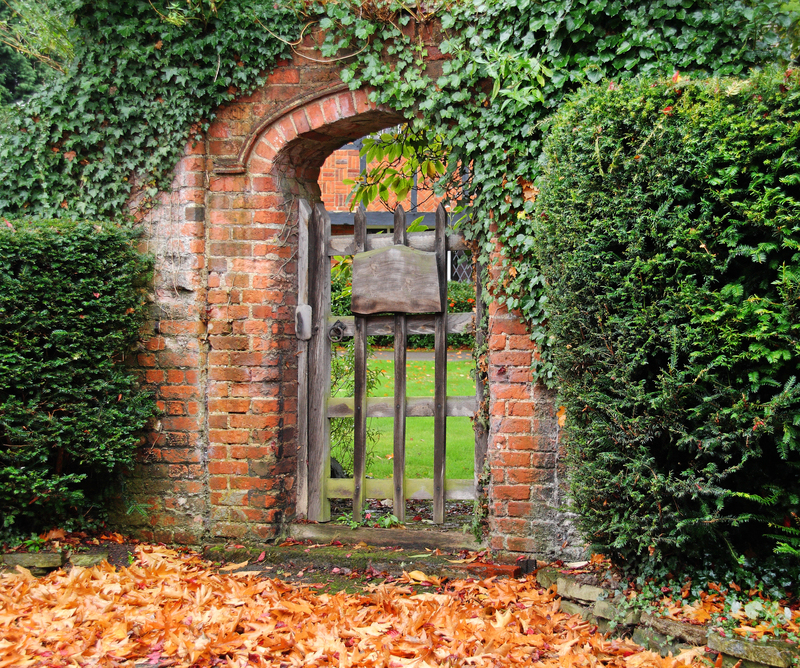Designing Dynamic Landscapes with Hedge Trimming Artistry
Posted on 18/08/2025
Designing Dynamic Landscapes with Hedge Trimming Artistry
When it comes to landscaping, the power of hedge trimming artistry is often underestimated. Far beyond routine maintenance, creative hedge trimming can transform ordinary gardens into breathtaking, dynamic landscapes. By skillfully shaping, pruning, and maintaining hedges, homeowners and landscaping enthusiasts alike can achieve visually stunning, functional outdoor spaces that stand out year-round. In this comprehensive guide, we'll explore how to design dynamic gardens through meticulous art of hedge trimming, presenting essential techniques, inspiring ideas, and expert tips to elevate your landscape design.

Understanding the Role of Hedge Trimming in Landscape Design
Hedge trimming artistry is more than just cutting overgrown bushes; it's an essential component of strategic landscape planning. Well-maintained hedges serve a dual purpose: they provide structure and privacy, and they become living sculptures that define the visual rhythm of a garden.
- Adding structure and formality: Hedges create defined lines and boundaries, offering order to expansive gardens and smaller yards alike.
- Encouraging biodiversity: Properly trimmed shrubs and hedges support a healthy ecosystem, welcoming birds and beneficial insects.
- Year-round interest: Evergreen species, in particular, bring lasting color and form, ensuring beauty even in winter months.
- Artistic expression: Creative hedge trimming turns a garden into a living gallery, with shapes from geometric to whimsical topiary.
When designing dynamic landscapes, hedge trimming artistry becomes a versatile tool, bridging the practical and the picturesque.
Planning Your Hedge Design: The First Step Towards Artistic Landscaping
Assessing Your Space and Setting Goals
Before reaching for the shears, assess your garden's unique characteristics. Consider size, sunlight, existing plantings, and the overall theme. Do you desire privacy hedges, bold geometric forms, or playful, naturalistic shapes? Clearly outlining your goals will inform plant selection and guide your trimming artistry.
- Privacy and screening: Tall, dense hedges can buffer sound, block wind, and create secluded garden rooms.
- Formal structure: Boxwood and yew lend themselves to crisp lines for a classic, formal look.
- Organic flow: Loosely trimmed hedges of holly or laurel create softer transitions and more natural movement.
- Whimsical creativity: Train privet, hornbeam, or even rosemary into imaginative topiary shapes.
Choosing the Right Plants for Dynamic Hedge Trimming
Plant selection is critical for successful landscape hedge artistry. Not all shrubs respond well to heavy pruning and frequent shaping. Select species known for their dense foliage and resilience to frequent cuts:
- Boxwood (Buxus sempervirens): Classic, slow-growing, excellent for formal designs.
- English yew (Taxus baccata): Evergreen, adaptable, great for topiary.
- Privet (Ligustrum spp.): Fast-growing, versatile, perfect for privacy screens.
- Hornbeam (Carpinus betulus): Deciduous, holds its leaves into winter, ideal for structural hedges.
- Laurel (Prunus laurocerasus): Rapid growth, lush foliage, suited for organic shapes.
Make sure the chosen plants thrive in your local climate and soil conditions for optimal dynamic landscape design results.
Mastering the Techniques of Hedge Trimming Artistry
Basic Hedge Trimming Techniques for Healthy Growth
Healthy, vigorous hedges form the foundation of all artistry. Here are the key essentials:
- Timing: Trim most evergreen and deciduous hedges in late spring or early summer, after new growth appears.
- Tools: Use sharp, clean hedge shears or electric trimmers for best results.
- Tapering: Always trim so the base is wider than the top. This ensures sunlight reaches all leaves and prevents dieback.
- Regularity: For sculpted forms, frequent light trimming throughout the growing season is better than infrequent heavy cutting.
Advanced Trimming Styles for Artistic Impact
- Geometric Hedge Design: Achieve classical elegance with straight lines, crisp corners, and perfect spheres. Use stakes and string for accuracy.
- Topiary Artistry: Craft whimsical animals, spirals, and ornamental shapes with template guides or freehand skill.
- Cloud Pruning (Niwaki): Prune shrubs into soft, cloud-like forms for a modern, sculptural effect inspired by Japanese gardens.
- Naturalistic Shaping: Mimic the randomness of nature by blending sculpted hedges with looser shapes for a dynamic, organic feel.
Specialty Hedge Trimming for Dynamic Landscapes
Mixing and matching different hedge heights, textures, and shapes can create visual excitement and garden dynamism:
- Layered Hedges: Plant tiers of varying heights for a multidimensional effect.
- Contrasting Colors: Combine green, gold, and variegated foliage for a vibrant palette.
- Focal Points: Use a dramatically trimmed topiary or shaped hedge as a garden centerpiece.
- Pathway Borders: Define walkways with parallel, symmetrically trimmed hedges.
Creative Ideas for Dynamic Hedge Designs
1. Living Labyrinths
Transform your landscape into a magical maze with tall, thickly grown hedges. Privet or yew are excellent choices for this dynamic landscaping technique. Not only do labyrinths provide visual intrigue, but they also invite exploration and play.
2. Artistic Topiary Gardens
Curate a collection of animal, geometric, or abstract shapes using the craft of topiary. Whether you aspire to a whimsical rabbit or classic spiral cones, the key to success is patience and incremental shaping.
3. Patterned Parterres
Recreate the elegance of French formal gardens by trimming low boxwood hedges into symmetrical, intricate knotwork patterns, often filled with colorful annuals or gravel.
4. Flowing Organic Hedges
For a more contemporary landscape, use gently curving, undulating hedges that mimic the movement of water or wind. Cloud pruning and soft, sweeping lines break up the monotony of rigid rectangles.
5. Mixed Borders with Flowering Hedges
Blend the structure of evergreen hedges with the seasonal color of flowering shrubs such as hydrangeas, lilacs, or roses for dynamic seasonal displays.
Best Practices for Maintaining Artistic Hedges
Once you've created dynamic shapes, regular maintenance is essential to uphold the beauty and health of your hedge designs.
Essential Maintenance Tasks
- Regular Inspection: Check for signs of pests, disease, or uneven growth.
- Proper Watering: Newly planted or trimmed hedges need consistent moisture, especially during dry spells.
- Fertilization: Feed hedges with balanced, slow-release fertilizers to encourage lush growth.
- Pruning Dead Wood: Remove all dead or diseased branches promptly to keep hedges healthy and attractive.
Seasons of Trimming and Their Importance
- Spring: Shape formal hedges after the last frost as new growth begins.
- Summer: Perform maintenance trims, focusing on shaping and controlling vigorous growth.
- Autumn: Lightly trim to maintain shape, but avoid hard cuts that encourage late soft growth susceptible to frost.
- Winter: Some deciduous species can be pruned, but most artistic shaping should wait until growth resumes.
Tools and Equipment for Hedge Trimming Artistry
Investing in the right tools is critical for precise, safe, and enjoyable hedge trimming artistry:
- Manual Shears: Perfect for detailed work and finishing touches.
- Electric/Power Trimmers: Ideal for large hedges or speedy, even cuts.
- Loppers: Use these for thick branches and rejuvenation pruning.
- Topiary Frames: Wire guides help beginners achieve complex shapes.
- Protective Gear: Gloves, goggles, and sturdy shoes keep you safe.
Keep your tools sharp, clean, and well-maintained. Well-cared-for tools make the difference between a ragged hedge and a masterpiece.
Environmental and Sustainable Aspects of Artistic Hedge Trimming
Artistic hedge trimming is not only aesthetically rewarding but also eco-friendly and beneficial for the environment when done responsibly.
- Wildlife Habitat: Dense hedges provide shelter and nesting sites for birds, small mammals, and pollinators.
- Climate Adaptation: Native shrubs require less water and fewer chemicals, supporting sustainable gardening.
- Air Quality: Thick hedges trap dust, absorb carbon dioxide, and help cool the area in urban environments.
Sustainable Practices for Hedge Trimming
Compost trimmings rather than sending them to landfill, and consider incorporating clippings as mulch beneath hedges.
Avoid trimming during bird nesting season. Sustainable hedge artistry also means choosing organic fertilizers and integrated pest management whenever possible.
Expert Tips for Achieving Professional Hedge Trimming Results
- Start with a clear plan: Sketch your desired shapes or patterns before making the first cut.
- Work slowly and step back frequently: Assess progress from a distance to catch uneven growth early.
- Invest in quality tools: A sharp blade makes all the difference in clean, healthy cuts.
- Practice patience: Dynamic hedge designs are often developed over several seasons, not overnight.
- Don't be afraid to experiment: The beauty of hedge artistry is that it can always be refined and reshaped over time.

Inspiring Examples of Dynamic Landscape Hedge Designs
Formal English Manor
Enormous, square-cut yew hedges interspersed with spherical box balls create drama and structure, defining parterre gardens and elegant pathways--a classic testament to the power of hedge artistry.
Modern Contemporary Garden
Sweeping cloud-pruned hedges border minimalist patios, their organic shapes softening hardscapes and adding sculptural intrigue to the space.
Whimsical Cottage Landscape
Meandering hedges of lavender and rosemary, trimmed to low, rolling waves, edge stone walkways. Occasional topiary rabbits and spirals add a playful, dynamic touch that changes with the seasons.
Conclusion: The Lasting Impact of Hedge Trimming Artistry
By embracing the artistry of hedge trimming, you unlock boundless possibilities for dynamic, visually engaging landscapes. Whether you desire formal structure, contemporary flair, or whimsical charm, the right hedge designs--carefully maintained and artfully shaped--bring your outdoor vision to life.
With a thoughtful design plan, suitable plant choices, and expert trimming techniques, you can create living works of art that delight family, guests, and wildlife alike. Let your creative spirit guide your garden shears, and watch as dynamic hedge artistry transforms your landscape into a masterpiece--one trim at a time.

